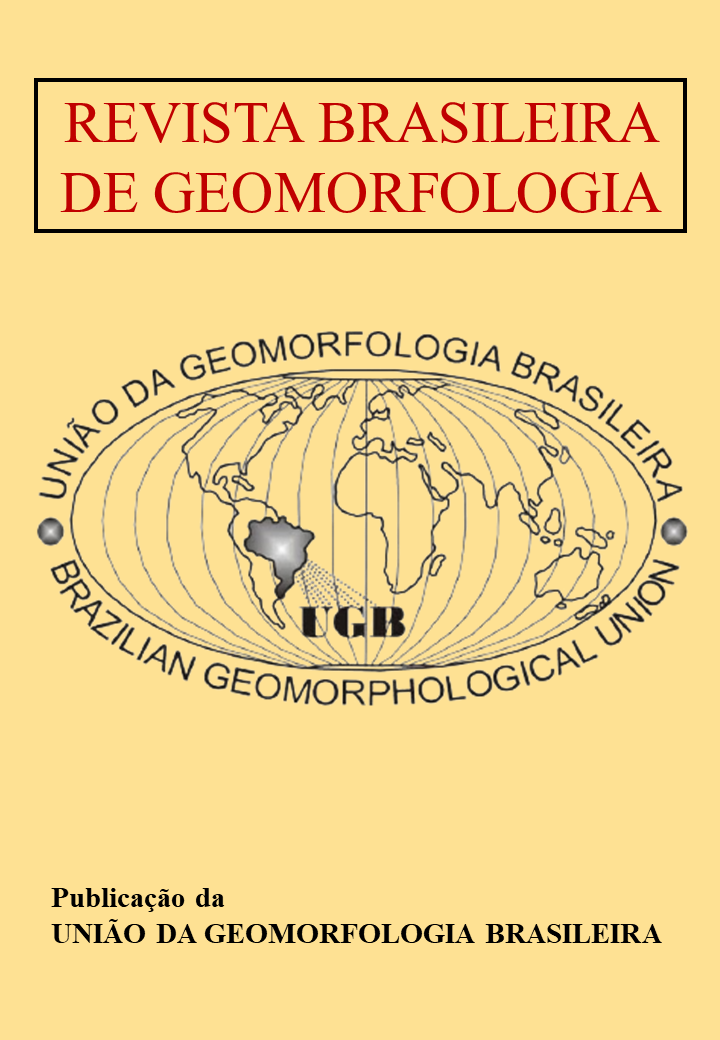Why do large rivers tend to form multichannel? A field study in the Upper Paraná River
DOI:
https://doi.org/10.20502/rbg.v22i4.2014Palavras-chave:
padrão multicanal, padrão anastomosado, potência de fluxo específica, rio Paraná, conceito de eficiência máxima de fluxoResumo
Anastomosed rivers include a diverse group of fluvial forms with multiple and interconnected alluvial channels. They occur in a wide range of climates and reliefs and constitute the typical pattern of the mega rivers (Qm> 17,000 m3s-1). Several authors have assumed that the development of an anabranching formation is the mechanism by which a channel maintains its maximum efficiency. However, this has only been tested by mathematical studies. In this study, we confirm this theory in a 58-km anabranching reach of the Upper Paraná River, through a hydraulic and bathymetric survey of 14 cross-sections. We conclude that where the slope can'tincrease, the channel reduces its w:d ratio, thereby maintaining its efficiency in the wider sections, according to the specific stream power equation (ω=ρgQs/w). The channel width and alluvial plain width are controlled by allochthonous factors (tectonic lineaments and bank composition). Although the nodal sections have the greatestefficiency, we confirmed that flow efficiency is maintained at a constant level of bedload transport and specific stream power along the anabranching reach.Downloads
Não há dados estatísticos.
Downloads
Publicado
27-09-2021
Como Citar
Stevaux, J. C., Gon, P. P., Leli, I. T., & Fujita, R. H. (2021). Why do large rivers tend to form multichannel? A field study in the Upper Paraná River. Revista Brasileira De Geomorfologia, 22(4). https://doi.org/10.20502/rbg.v22i4.2014
Edição
Seção
Artigos
Licença
Autor(es) conservam os direitos de autor e concedem à revista o direito de primeira publicação, com o trabalho simultaneamente licenciado sob a Licença Creative Commons Attribution que permite a partilha do trabalho com reconhecimento da autoria e publicação inicial nesta revista.










